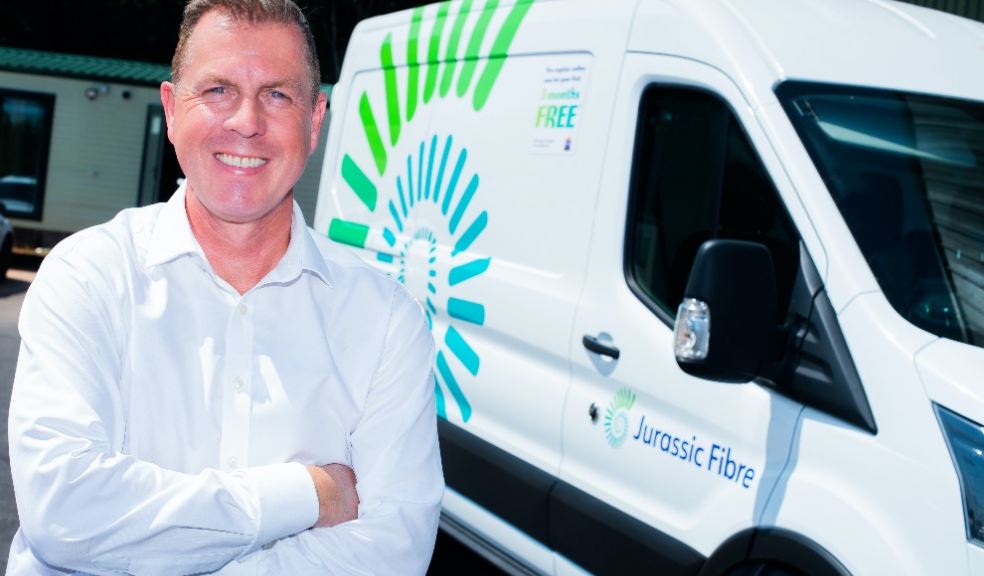
The smart home and the need for better broadband
Steve Garrood, Chief Commercial Officer at Jurassic Fibre, shares his thoughts on how ultrafast connectivity is supporting digital lifestyles in the South West...
Our reliance on high-speed broadband connectivity is showing no sign of letting up as digital lifestyles increasingly become the norm.
And even though lockdown restrictions have eased, our consumption of data continues to speed up, not slow down.
The smart home revolution and shifting lifestyle habits are driving the need for ultrafast fibre broadband to the home and work premises to meet the demand of our digital lifestyles.
Our data consumption has put connectivity at the forefront of what’s important in our home and working lives.
But too often, broadband connections are failing to keep up with digital changes and innovations for our lifestyle needs.
The need for better broadband in the South West
Geography has been a major obstacle hampering our access to better broadband connections for too long.
The rural areas of the South West (and there are a lot of them) have suffered from under investment and the coronavirus pandemic has really highlighted this shortfall.
When working from home became essential for so many of us, we soon realised that the need for better broadband in the South West has been an overdue necessity.
And now that the pandemic has accelerated our connectivity needs for work and leisure at home, the demand for better broadband in the South West has really been exposed.
How has the pandemic changed our digital lifestyle?
We’ve all adapted at least some, if not many, aspects of our lives since the pandemic began.
For so many of us, a key change has been that we’re reliant on our broadband to keep us connected, and we’re much more connected because of our broadband.
We’ve changed how we work and operate at home, and the pandemic has shown that our social lives and how we engage in entertainment is intrinsically linked to the quality of our broadband connection.
And trends suggest that our demand for better broadband won’t stop or weaken because of the pandemic.
Our interactions with each other have changed which makes us rely on connectivity more than ever before. Our connection to the outside world, community, and family is through our broadband and that little box that gives us a Wi-Fi signal.
The importance of good broadband to our smart homes and digital lifestyles
Of all the services and utilities we consume, a good broadband connection has become as critical as any other. So, why wouldn’t we prioritise a good broadband connection at home?
The importance of good broadband connectivity is emphasised by questions we ask frequently without thinking.
What do we ask when we visit a friend’s house? Or when we go to work or visit other offices? ‘Can I have the Wi-Fi code?’
What’s the first question we ask when we go on holiday? ‘Is the Wi-Fi good?’
The connectivity of our phones, laptops, and tablets has become an essential part of day-to-day life. While at the same time, the Internet of Things[1] has ramped up the importance of the need for better broadband to connect to our personal devices.
And phones are perhaps the central device to keep us connected in our digital lifestyles.
The first thing we pick up when we leave the house is our phone. Your phone contains your money, can unlock your car, connects to your home security and heating systems, etc. So, a good broadband connection is a critical service for our personal and working lives.
Smart innovations are helping to drive the need for fast full fibre broadband
15 years ago, we probably had up to 10 devices at home, that could potentially connect to the internet.
Now, with working at home, entertainment, the Internet of Things, and increasingly more smart innovations, we have far more devices that are reliant on a decent broadband connection.
We have 4K TVs, music streaming around the house, video security doorbells, and CCTV all using our broadband connection.
This extra pressure on bandwidth is driving the need for faster full fibre broadband for the home and work premises.
Often when people talk about fibre broadband, they’re talking about delivering Fibre-to-the-Cabinet, at a street level. This part-fibre solution uses old fashioned copper cables to connect your home to the cabinet. What’s more, the rest of your street is using the same fibre connection.
If you look at it this way, with Fibre-to-the-Cabinet you could receive 50 or 60Mbps, which, on the face of it, sounds good. But your 4K TV uses half of that, your wireless sound system takes a quarter, then your laptop, home security system, and children using the internet all pile on pressure. Each house in your street could put the same strain on the connection.
All these devices using fibre to the cabinet broadband can cause the connection to crash.
The pressure, from the multitude of smart devices in our home, is driving the need for a different and better type of broadband. Fibre-to-the-Premises broadband is delivered directly to your home, meaning that the fibre optic cable runs all the way to your premises; providing much faster speeds than copper and removing the frustration of sharing your broadband connection with the rest of the street.
New ways of working and living that rely on a strong broadband connection
For many of us, it’s not about how quickly we can download or stream a movie anymore. We’re using our broadband connection and internet bandwidth in different ways.
While smart innovations are transforming our data consumption for entertainment and home devices, recent remote working changes also rely on a strong broadband connection and the need for faster upload speeds.
For instance, graphic designers and photographers often need to send massive files, which on a Fibre-to-the-Cabinet connection could take a day. Whereas, using a full Fibre-to-the-Premises connection massively increases the bandwidth available and improves upload and download speeds.
Moreover, we are seeing more and more residential customers plugging in even more digital services.
With many new-build houses, Wi-Fi enabled heating controls, security features, solar panels, and CCTV are putting more pressure on broadband connections, and the quality of connection determines how well they’ll work.
The Future – will digital habits change post pandemic?
The increase of data consumption appears to be here to stay.
While demand for data increased during lockdown, the huge spikes in day-to-day network volumes usually only seen at times such as Christmas Day have become the norm.
We never expected the ramp up of data consumption to continue as lockdowns eased but technology and the connected world is the norm now.
Many of us are happy working from home and kids increasingly rely on the internet at home for school work.
An average household probably has over 10 connected devices without TVs, the Internet of Things, etc. hanging off the network. They all increase the bandwidth needed.
If you need a faster broadband connection for your home or work, find out more about ultrafast full fibre broadband by visiting Jurassic Fibre or contacting our sales team: 01392 345595 or sales@jurassic-fibre.com
Steve Garrood Bio:
Steve has been the Chief Commercial Officer for Jurassic Fibre since January 2021. He has over two decades of experience in senior sales and leadership roles for WiFi, Telecoms, Enterprise Software, FinTech, Big Data and Analytics companies.
[1] The Internet of Things describes devices that are connected and share data with each other such as smartphones, wearables, sensors, and smart home devices.











